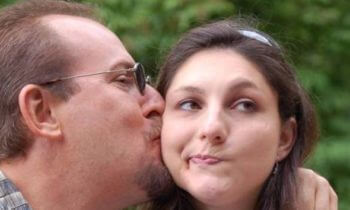Many believe love is the only thing necessary for a healthy relationship. Although love is important, it’s not necessarily the only thing. Most people say they are “in love” when they get married, but their love only lasts so long as many marriages end in divorce all around the world.
So outside of love, I would say that a healthy relationship would be defined by four words: commitment, stability, commonality, and happiness.
How to have healthy relationships 1: Commitment
Being committed to a person is the epitome of love. In essence, commitment and love go hand in hand. Being committed means putting up with each other, and accepting the person for who they are. Being committed is not dependant on the other person changing just because you don’t like something about them.
Being committed means you are faithful to them through good times and bad. Not only when you are happy and fulfilled, but also when you are not.
This is also where time and finances come in (as well as the next point of stability). We spend money and time on what we are committed to. If we value our golf game, we will buy whatever club, shoe or ball that we believe will help. If we value video games, we will spend countless hours in front of our ‘gaming stations’.
What we value, we will buy
So obviously, to set up a healthy relationship both sides need to be committed to keeping the relationship somewhat equal – especially in the amount of time and money we invest.
This is why money problems put a tremendous strain on relationships. If you don’t believe me, just wait till you are married. This is because all human relationships are highly susceptible to the idea of “being used” or “being taken for granted”. Especially when it comes to the amount of time, money and effort each side is contributing to the relationship. We humans seem to get offended when we feel that we’re working harder than someone else.
Healthy relationships start to die when one side begins to think they are contributing more than they should. So, early in the relationship, we must come to an understanding of just what is to be expected from each side. There seems to be no secret 50/50 formula, only that whatever the agreement, both sides must agree and abide.
How to have healthy relationships 2: Commonality
There is a saying that opposites attract. This may be true, but it won’t ensure they stay together.
Just think about long-term friendships. We are friends with people we enjoy being around. We are friends because we have similar interests and basically like doing stuff together. However, friendships can slowly grow apart when interests start to differ or when we stop enjoying each other’s company.
This is because healthy relationships are easier to start, build and support when people have various things they like to do together. Many start a relationship pretending to be interested in the same things as their partner. They want to keep the relationship going, so pretend to show interest. Then both sides begin to do their own things, forsaking doing activities together. Then over time they drift apart with no common interest to keep them together.
I found this to be a common trait in happy marriages. Everyone I know, that has been married for a long time, seem to have a number of things they really enjoy doing together - whether it be talking long walks - playing tennis - watching similar TV shows together - traveling to exotic locations etc.
It’s amazing how much we can overlook when we find people who share our similar interests and enjoy doing things with us!
How to have healthy relationships 3: Stability
Stable people can live their own life. They don’t have to be in a relationship to feel secure. Although loneliness affects everyone, stability allows you to live on regardless of who you’re dating or how many friends you have. Stability is not really about being balanced or having emotional control. I believe it is something we work on over time. Being stable, as a person, starts by disciplining ourselves to build our confidence, establish some sense of self-control and working on the mental toughness we need to deal with everything life throws at us.
Healthy relationships depend on at least one side providing stability. And it’s much easier to have a healthy relationship when both sides are somewhat stable and not so lopsided.
It’s impossible to have a stable relationship if one side is always carrying the load (which is a very common complaint with marriage counseling). People can only feel used for so long, before something gives. When it does, it’s never pretty.
Another aspect of stability is the emotional and psychological side. A healthy relationship is not defined by constant arguing, yelling and fighting. Yes disagreements and emotions can run high, but life is never fun if this perpetually goes on and on and on.
The problem with unstable people, is they often take advantage of the others stability. This is often why co-dependency occurs. One side feels bound by duty, while the other thrives off the control (and help) they derive. The unstable person may even try to bring others down, to their level, to feel better about themselves. These actions may lead to the stable person enabling the other, which is more than just unhealthy. It’s just plain toxic.
To develop a healthy relationship some type of balance has to be found to keep the relationship on stable footing.
How to have healthy relationships 4: Happiness
I realize happiness is basically an emotional response to a given activity or circumstance. However, humans place a huge importance on their own happiness. When that happiness is threatened, most people will do whatever it takes to keep/find their happiness once again.
In its true form, I guess happiness is similar to contentment. We can be in an awful situation, but still be content. This is because happiness is a part of us. Our happiness is not completely dependent on our situation, but in the contentment we find in the moment.
So, I would have to say, in a loose sense, that a happy relationship is a healthy relationship. Unless both sides find comfort in mutual unhappiness.
As a minister of over 10 years, one of the most common issues we had to deal with was broken relationships. The most common phrase started with something like - I’m just not happy anymore because… he doesn’t listen anymore… they always say I’m… we don’t do things together…. She keeps nagging me about….
There may be truth to the things making one side unhappy. However, sometimes “being happy” is more of an emotional response that comes and goes. We can be happy one minute because we have coffee, and unhappy the next when it falls in our lap.
Yet in life, like relationships, the problem is keeping that happiness over the long-term.
Here are a few ideas:
- Each person in the relationship needs to be happy and content with their own selves first.
- When we find our happiness, we can work with others to build a relationship that keeps both sides happy.
- Sometimes we must be willing to sacrifice our own happiness, if it helps the other find happiness.
- When both sides are committed to each other, a happy balance can always be found.
Finally, if one side gets selfish or ‘hogs all the happiness’ than a healthy and happy relationship is never going to happen.
Healthy relationships final thought
If you want to have a healthy relationship, you must first be healthy in these 4 areas. Then you can help the other find their healthy place as well.




